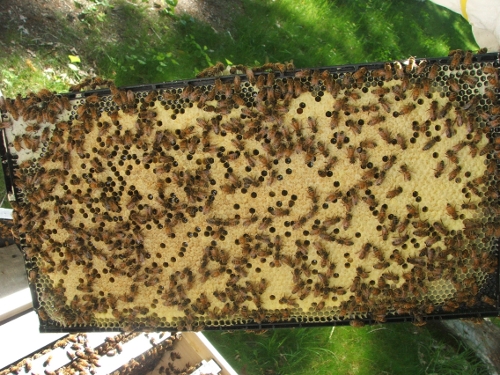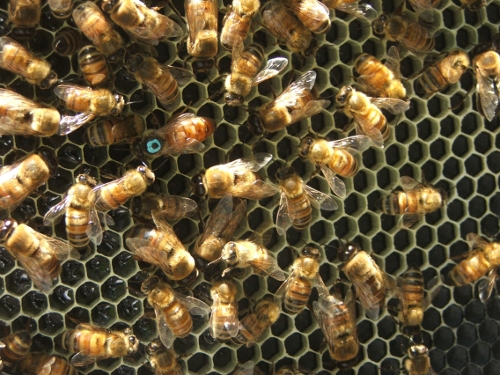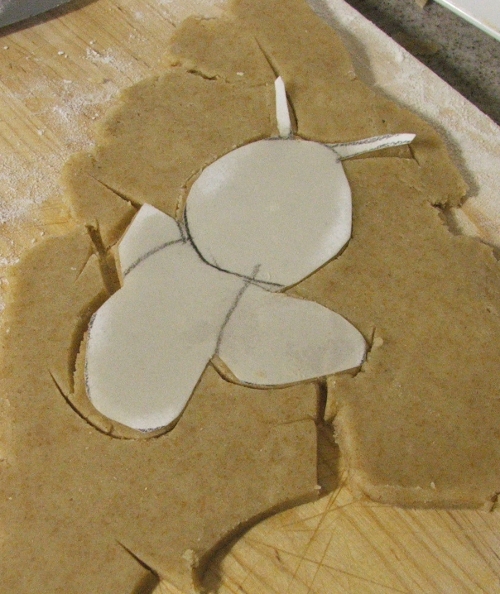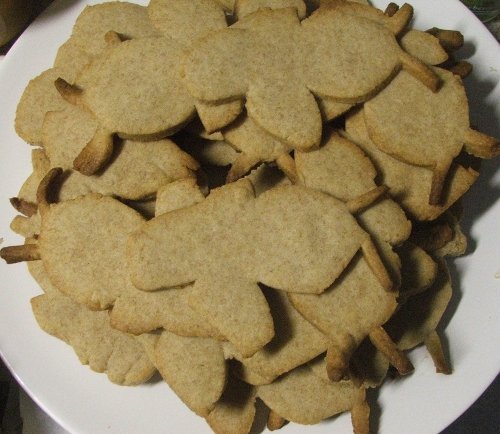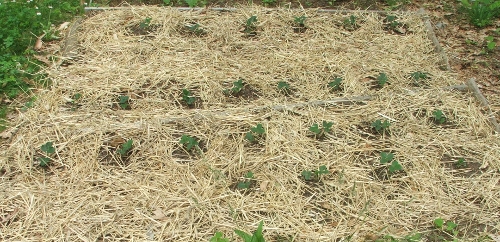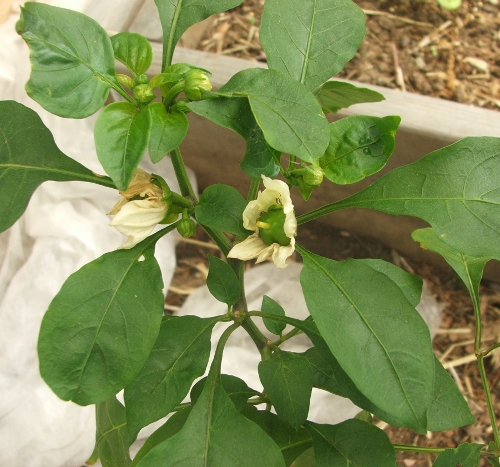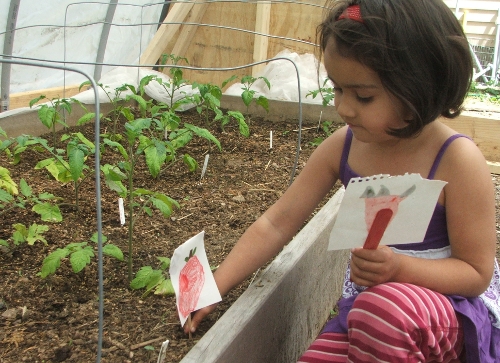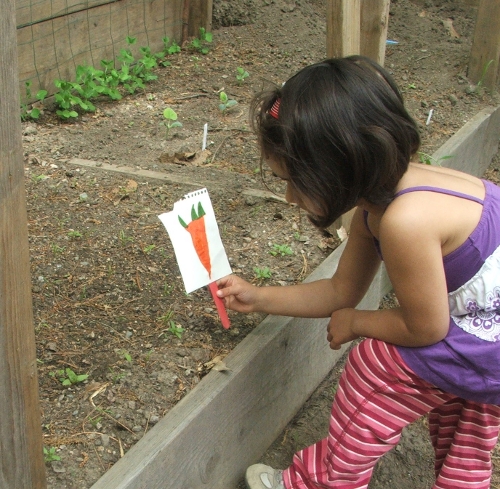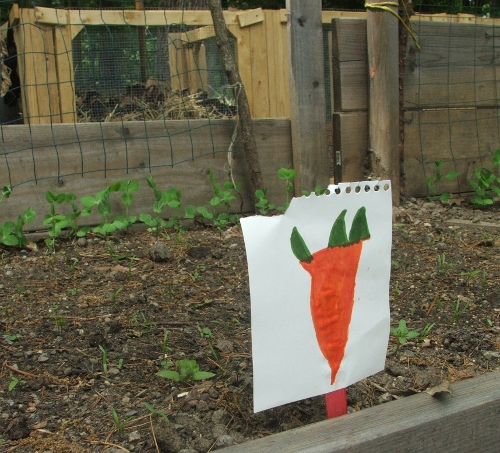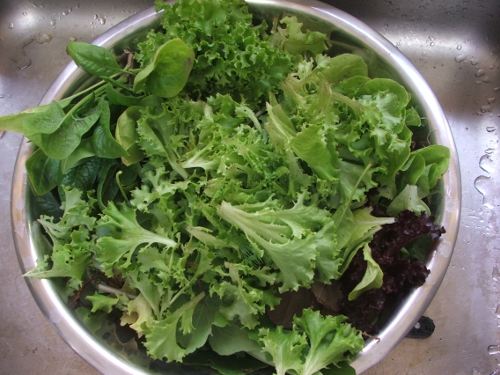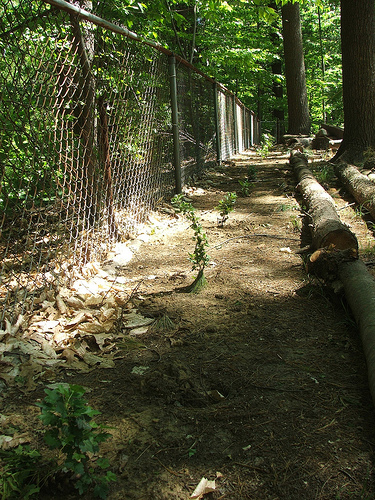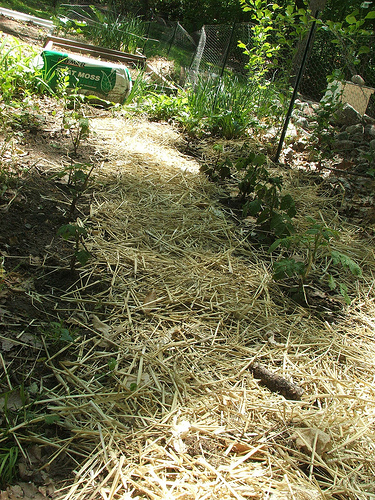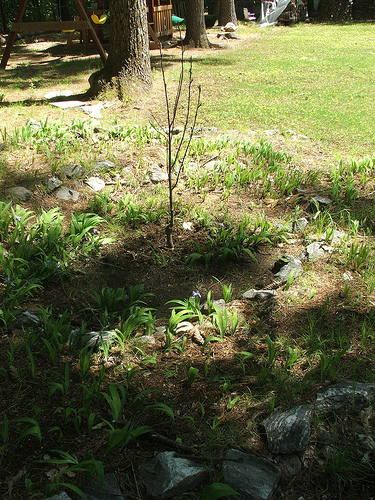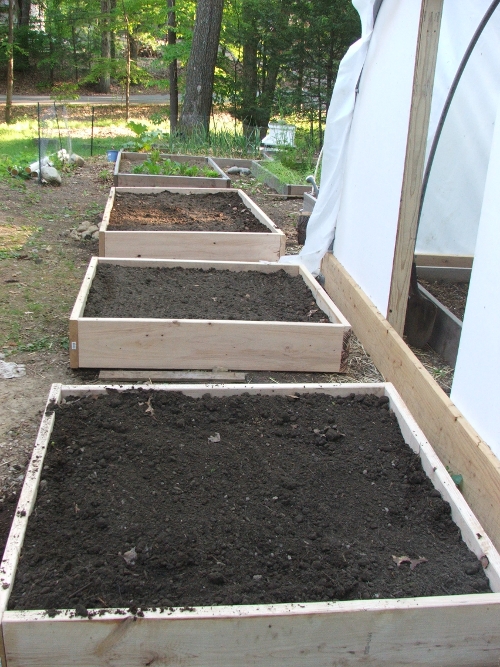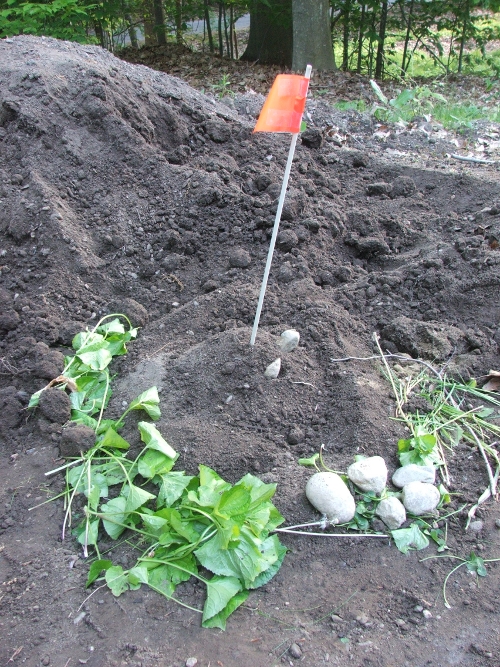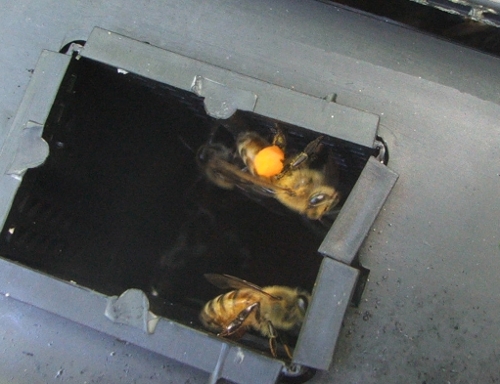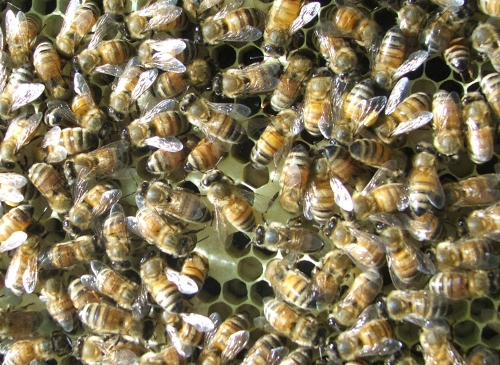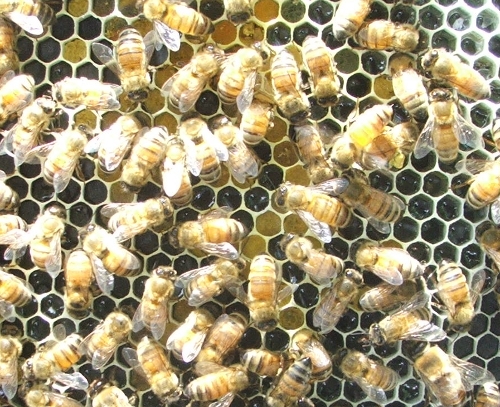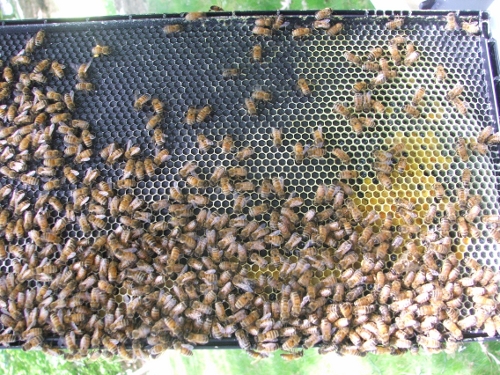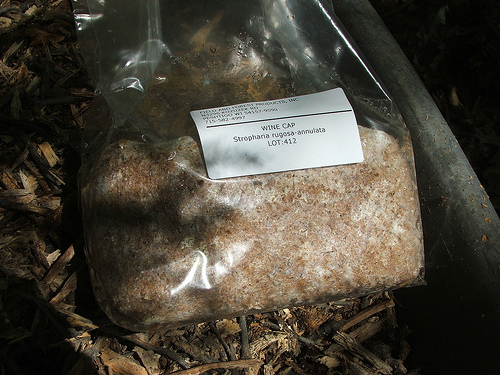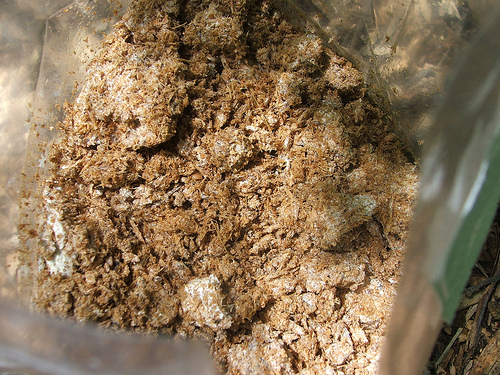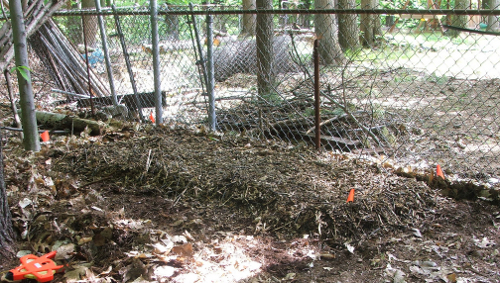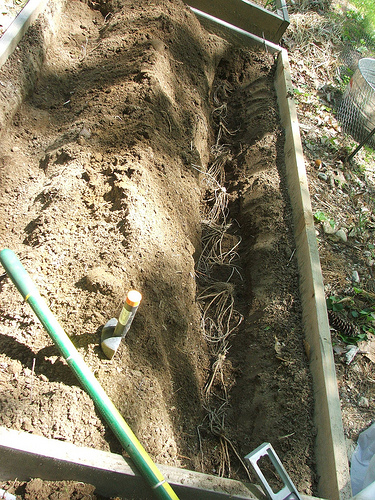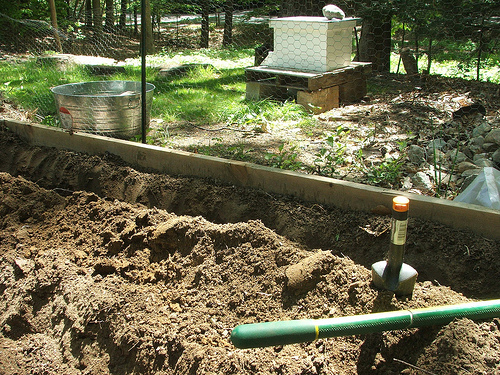It’s 10:30 am and I just came in from an hour of watering the garden. And from the heat. It’s 87 F (30.5 C) and the sun’s a scorcher. Most plants are holding up well, except for the brassicas. The kale especially is doing some spectacular wilting. The beans are coming up nicely, in more-or-less straight lines, and all of them together. In a day or two I’ll spot the empty spots (where the squirrels or chipmunks dug ’em up) and will tuck in replacement seeds.
And I used up all the water in my three 60 gallon rain barrels. I concentrated on the veggies and the new transplants, and was very stingy with the bushes, trees and canes. Still, it was all gone in a matter of days.
So yesterday I hooked up another 60 gallon barrel, and today I’ll try to rig up the large drum that was given to us last year. It’s made of metal, is rusting a fair bit, and it was painted, so in contrast to my plastic food-grade barrels, I’m hesitant to use it on the veggies. But it will do where I plan to put it, in the “utilitarian” part of the property, where it will serve for rinsing pots and whatnot. Then I have a fifth, 40 gallon barrel (food-grade) that I still need to find a good downspout for.
I water with a galvanized 4 gallon watering can, which I refill from my barrels (which are slow when they’re low), so it takes me a while to work my 650 930 square feet of beds. We’ve been thinking about putting in soaker hoses, but the cost is prohibitive, and anyway I like my daily hour visiting each plant personally with a drop to drink. That way I know what’s going on with them on a day to day basis. And I stop to weed a bit, and to train the peas to the trellises…
Yesterday NOAA promised a 40 to 60% chance of rain tomorrow and the day after, but today I see all that welcome rain has evaporated to a 20% chance of thunderstorms. I know those: a sprinkle and that’s it. Water is going to be an issue this year!


